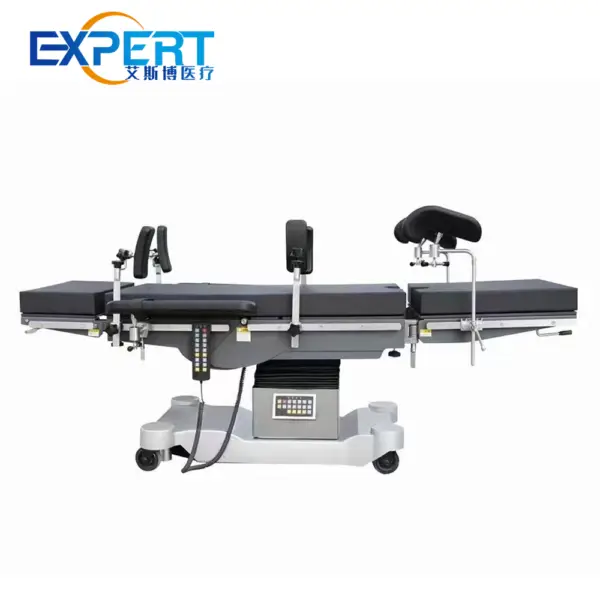Address
304 North Cardinal St.
Dorchester Center, MA 02124
Work Hours
Monday to Friday: 7AM - 7PM
Weekend: 10AM - 5PM
-600x600-1.webp)
Mobile operating tables have revolutionized surgical procedures by offering unprecedented flexibility and convenience. Unlike traditional fixed tables, mobile operating tables are designed to adapt to various clinical requirements, enabling healthcare providers to optimize workflow efficiency while ensuring patient safety and comfort.
The concept of operating tables dates back centuries, with rudimentary forms used in ancient civilizations. However, it was not until the 19th century that modern operating tables began to emerge, incorporating adjustable features for patient positioning during surgery. The evolution continued, leading to the development of mobile operating tables equipped with advanced functionalities.
Mobile operating tables offer several distinct advantages over their traditional counterparts:
Effective workflow management is essential for optimizing surgical outcomes and resource utilization. Mobile operating tables play a pivotal role in streamlining workflow processes by:
Several healthcare institutions have reported significant improvements in operational efficiency following the implementation of mobile operating tables. Case studies have highlighted:
The future of mobile operating tables is characterized by ongoing advancements and innovations aimed at further enhancing efficiency and patient care. Key trends include:

| Feature | Description |
|---|---|
| Flexibility | Equipped with wheels or casters for easy transportation within surgical suites and between departments. |
| Adjustability | Multiple adjustable components including height, tilt, and lateral tilt for optimal patient positioning. |
| Space Optimization | Maximizes space utilization within operating rooms, minimizing clutter and improving accessibility. |
| Compatibility | Compatible with a wide range of surgical accessories and equipment, enhancing versatility and integration. |
| Enhanced Workflow | Streamlines workflow processes by facilitating patient transfer, promoting team collaboration, and reducing turnaround times. |
In conclusion, mobile operating tables represent a paradigm shift in surgical settings, offering unparalleled flexibility, adaptability, and efficiency. By streamlining workflow processes, enhancing patient care, and fostering innovation, mobile tables are poised to play an increasingly vital role in the future of healthcare delivery.
Q:What are mobile operating tables?
A:Mobile operating tables are specialized medical devices designed to facilitate patient positioning and support during surgical procedures. Unlike traditional fixed tables, mobile tables are equipped with wheels or casters, allowing easy transportation within healthcare facilities.
Q:What are the benefits of mobile operating tables?
A:Mobile operating tables offer several benefits, including flexibility, adjustability, space optimization, and compatibility with surgical accessories. These features contribute to enhanced workflow management, improved patient care, and operational efficiency.
Q:How do mobile operating tables improve efficiency?
A:Mobile operating tables streamline workflow processes by facilitating patient transfer, promoting team collaboration, and reducing turnaround times between surgeries. These efficiency improvements lead to shorter procedure times, increased throughput, and cost savings for healthcare facilities.
Q:What are the future trends in mobile operating tables?
A:Future trends in mobile operating tables include the integration of technology, enhanced ergonomics, and remote accessibility. These advancements aim to further enhance efficiency, patient care, and surgical outcomes in the evolving healthcare landscape.
